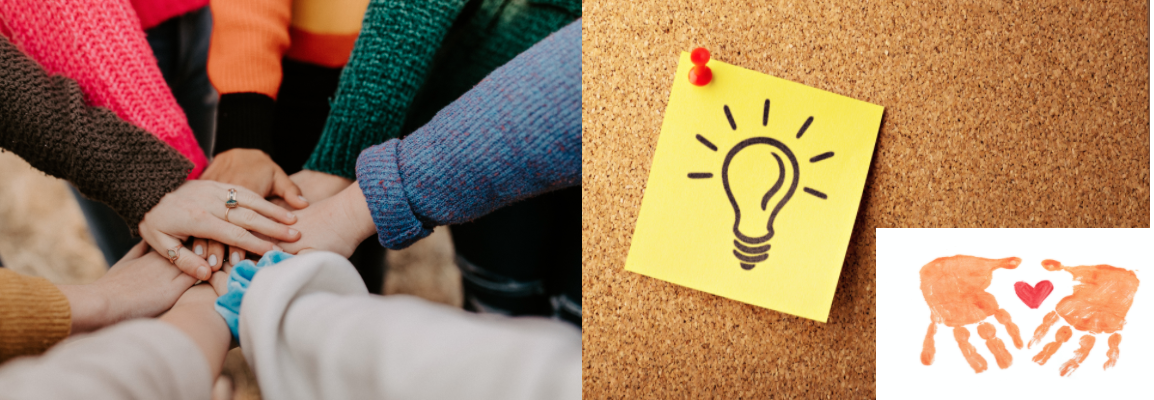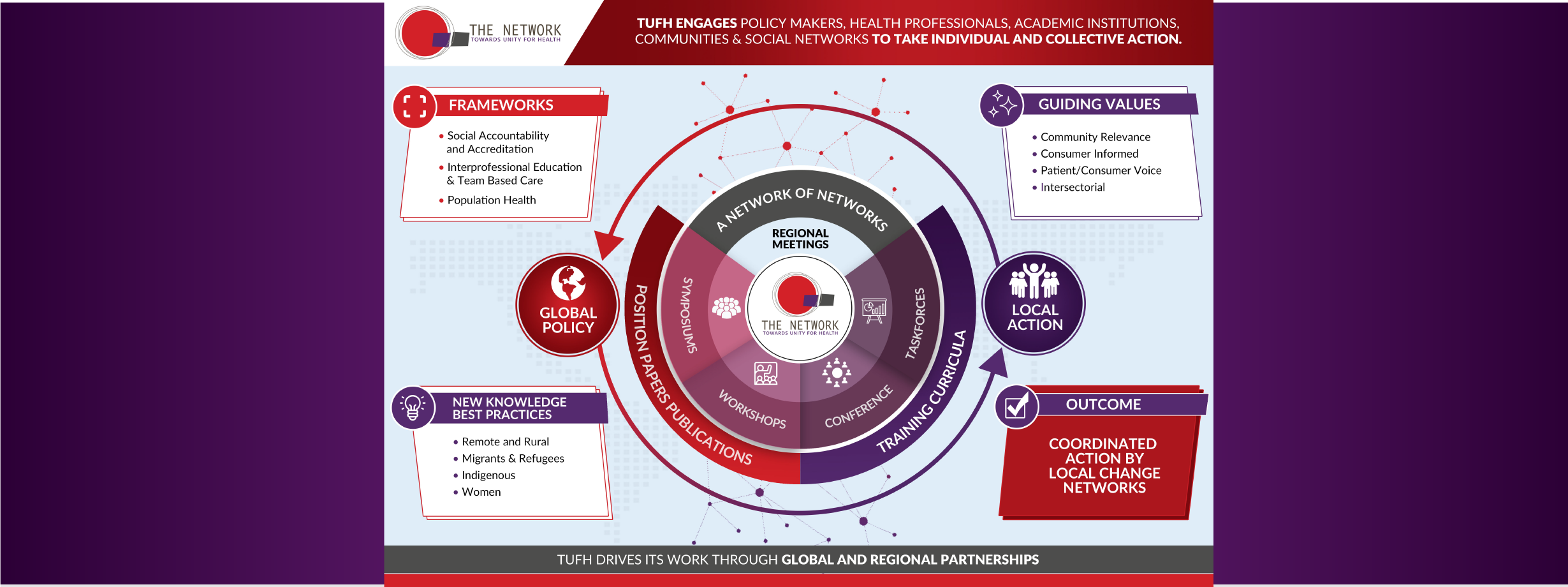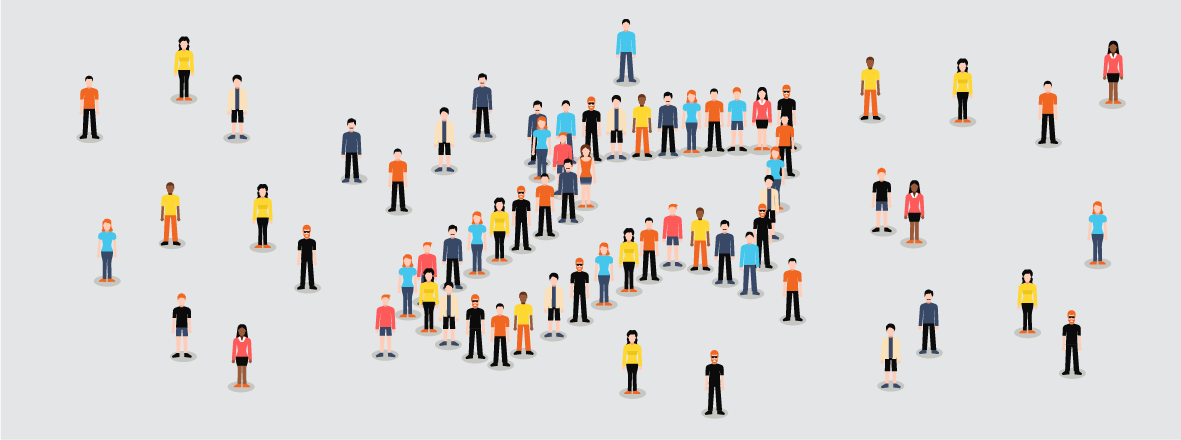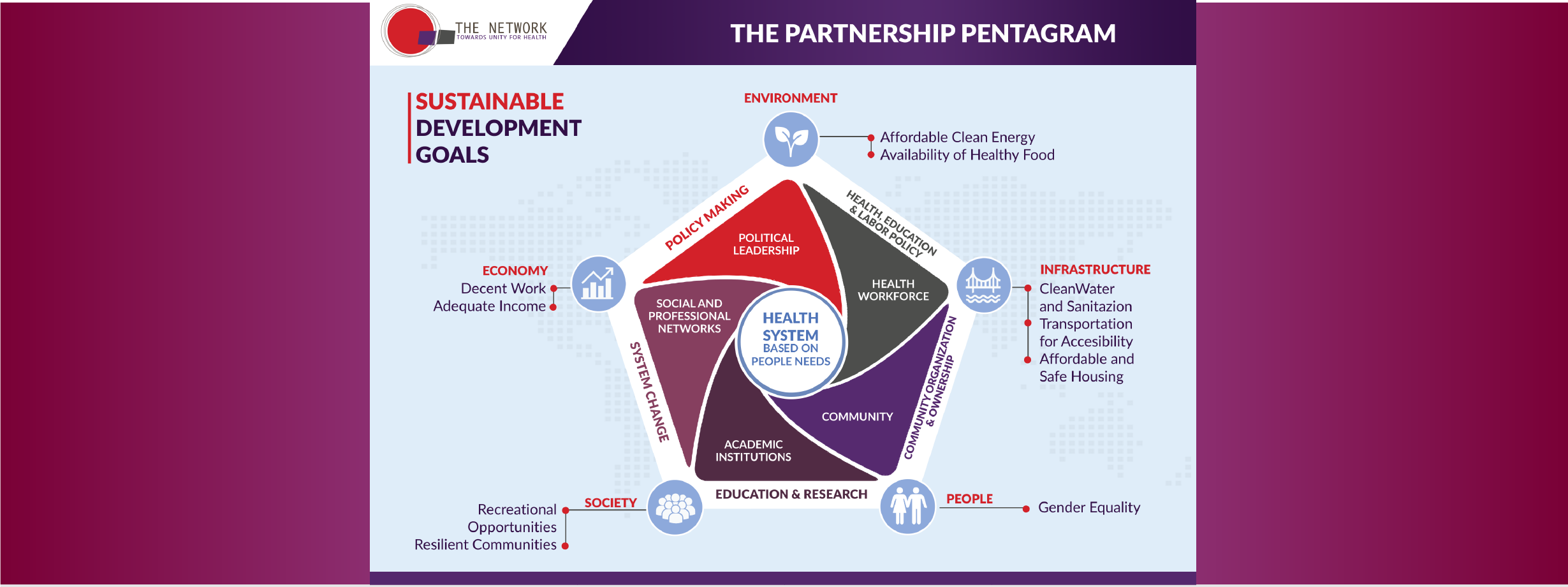Dear Reader,
We are excited to announce our partner organization, Woods Services (Woods), joined us to curate and launch our Spring 2020 edition, “An Insight into Social Innovations Within the Human Services System and Population Health.” This edition arrives, as we keep hearing everywhere, at an “unprecedented” time. The coronavirus (COVID-19) pandemic is changing the landscape for health and human services for our society on a daily basis, exposing many gaps and flaws in health care, public health, and other systems that govern this vital sector and affect all of us. While we don’t know what the full impact of COVID-19 will be, we do know that the social sector is helping pave the way for other organizations to think outside of the box while continuing to provide critical services -- and these supports are more important now than they have ever been.
In the human services space, Woods is an organization that has started to make the shift to population health as part of a transformational process that recognizes the remarkable potential for social innovation lies where the human services system meets population health. The relevance and applicability of population health to the human services is often overlooked as it is predominantly associated with the health care industry. However, health and human service leaders are shedding the old ways of doing business in favor of new approaches that are innovative, efficient, effective, and responsive to the needs and demands of focus populations.
Our work at the Social Innovations Journal is driven by the belief that “the potential for good ideas to inspire more good ideas cannot be underestimated.” In this edition, health and human services leaders, innovators, and entrepreneurs share ideas on meaningful and inclusive strategic planning practices that disrupt the status quo; effective change processes that result in successful and sustainable changes at both the micro (organizational) and macro (state-wide systems) levels; technological innovations that engage people in the healing process; and much more.
As you read these articles (summarized below) we believe you too will gain a greater sense of the promise that the intersectionality of social innovation, population health, and change initiatives hold across the spectrum of the human services system. We also are excited to announce an exciting new development from our Journal – the launch of peer-reviewed articles. This edition includes our first four peer-reviewed articles that we hope provide a greater level of insight, best practices, and nuances in innovation for our readers across sectors. As the newest addition to our journal family, we are proud to publish these articles reviewed by peers within their respective fields who have expertise in the topic of the manuscript and that will be published as part of special editions of our Journal.
We hope that you are as inspired by the stories, policies, and work shared in this edition as we are, and that each of us finds a way to make a difference in our community and world as we come together to face the challenges of COVID-19. We are better together, and we will come out of this crisis even stronger than before.
Yours in Innovation,
Tine Hansen-Turton
Special Edition Chair and Journal Co-Founder
Nicholas Torres
Journal Co-Founder
Dr. Scott Spreat
Special Edition Chair
“An Insight into Social Innovations within the Human Services System and Population Health”
Article Summaries
KenCrest’s Journey into Something New; Improving Social Innovation through Our ‘WHY’
Marian Baldini, MBA, MS, CEO and President, KenCrest
Strategic plans in the nonprofit human services sector are often not used as living, functioning documents. KenCrest, a human service provider of supports for people with intellectual and developmental disabilities, uses its strategic plan to guide daily conversations and drive strategic and operational decisions. This article describes how KenCrest uses its strategic plan to force important conversations about the challenges that are facing the industry and how it will respond to them. By reframing its mission and vision and building organizational capacity, KenCrest is reshaping how business can be done in a heavily regulated, compliance-minded industry by focusing on its “why.” Baldini illustrates how good planning facilitates innovation and leads to breakthroughs.
Does More Staff Make Individuals Safer?
Karin Annerhed-Harris, Associate Director, Alliance of Community Service Providers
This article shares a process that was used to challenge and ultimately change long-standing assumptions and time-honored practices regarding the provision of services and supports to individuals with intellectual and developmental disabilities. By convening a steering committee comprised of stakeholder representatives and piloting its recommendations, advocates invested in advancing “Everyday Lives” for individuals with intellectual and development disabilities were successful in eliminating the staffing grid, a tool which is commonly used by state intellectual disability departments to determine staffing levels, and replacing it with an innovative approach to ensure appropriate levels of services and supports.
Organizational Culture Change
Peter Shubiak, LCSW
The literature consistently cites a 60-70 percent failure rate in regard to organizational change efforts. Transitioning an organization from a current state to a desired future state, regardless of the scale, magnitude or duration of the project, requires that people at all levels of the organization understand, support, and adopt the changes. In other words, an organization’s capacity to achieve its goals correlates with its ability to shape its culture in support of them. This article provides examples of the ways in which Woods Services, a multi-service population health management and advocacy organization, set out to create an intentional organizational culture in support of its strategies and transformational initiatives. The culture shaping initiatives described in this article demonstrate the concerted efforts Woods made to align its corporate culture with its strategic and transformational goals in the areas of employee engagement and development; innovation; quality standards; and equity, diversity, and inclusion.
Philanthropy Disrupting the Human Service Ecosystem; Using Innovative Approaches to Strategic Planning and Grant-making
Vanessa B. Briggs, Brandywine Health Foundation and Tammy Dowley-Blackman, Tammy Dowley-Blackman Group, LLC
Committed to diminishing social, economic, and health disparities, the Brandywine Health Foundation adopted an innovative and community-inclusive strategic planning process that was designed to balance power by putting the voices of community residents front and center; achieve greater community impact by integrating issue areas; and facilitate integration among the more than 280 nonprofit organizations in its community. By embedding inclusion, diversity and equity into its strategic planning process, in addition to balancing intentionality with disruption of the status quo, the Foundation identified new priorities and transformed its philanthropic approach. This article invites other foundations to join forces by creating collaborative funding models across sectors, using this planning approach to drive disruptive change and to achieve deeper and sustained impact.
Creating Space for Processing and Healing: Amplifying Survivor Stories Through The Online Platform Our Wave
Laura Sinko, PhD, Director of Research and Evaluation, Our Wave and Kyle Linton, Executive Director, Our Wave
It is estimated that one in three women and nearly one in four men have experienced sexual violence at some point in their lives, bringing lasting feelings of shame, self-blame, confusion, and isolation. Our Wave is a recently formed 501(c)(3) non-profit organization and innovative online platform that allows survivors of sexual violence to anonymously and safely share their experiences. This article describes the features of the platform and future directions and implications of this organization. By giving survivors a platform and a direct bridge to accessible online resources, Our Wave hopes to encourage survivor engagement in the healing process.
A Population Health Approach for People with Intellectual Disabilities Using a Patient-Centered Medical Home Model
Tine Hansen-Turton, MGA, JD, FCPP, FAAN, President and Chief Executive Officer, Woods Services and Liz Hayden, MPH and MS Ed, Strategy Development Director, Woods Services
Despite advancements in the arenas of medicine and civil liberties, people with disabilities continue to experience significant barriers to care and health disparities. Woods Services adopted the principles and practices of population health management and implemented new service models that address the social determinants of health and incorporate the tenets of the Patient-Centered Medical Home. Results of a one-year pilot of the Patient-Centered Medical Home approach delivered by the Medical Center at Woods include a 35 percent reduction of in-patient hospitalizations and a 39 percent decrease of in-patient expenses. In addition, emergency room costs were down by 2.3 percent, and total costs declined by 8.7 percent.
An Innovative Public-Private Partnership Addressing the COVID-19 Pandemic
Liz Hayden, MPH and MS Ed, Strategy Development Director, Woods Services and Nancy De Leon Link, MGA, Chief of Staff, Homestead Smart Health Plans
Woods Services, a nonprofit population health organization employing 2,000 people, and Homestead Smart Health Plans have been working collaboratively, with Homestead serving as Woods employee health benefits vendor. This unique collaboration arises out of the shared population health focus of each entity, and the willingness on the part of each to continually develop creative and innovative ways to enhance benefits for employees, improve their health, and optimize health care savings so that Woods can continue to deliver on its core mission -- to provide comprehensive services to people with intellectual disabilities, autism, behavioral challenges, and medical complexities. Homestead’s reference-based pricing model enabled Woods to save on health insurance costs, allowing savings to be reinvested in a robust employee engagement strategy. This strategy is showing positive results. Now more than ever a population health strategy is critical for both the clients Woods serves and the employees who care for them, in light of the COVID-19 pandemic.
America’s Silent Healthcare Army
Nathan Bronstein, MPA, MsED, MSSP and Michael Clark, MPA
Nearly 450,000 Nurse Practitioners (NPs) and Physician Assistants (PAs) work in virtually every health care touchpoint in the U.S., filling the nation’s health care gaps. These highly trained and certified medical professionals and the Convenient Care Clinics, in which many of them work, demonstrate the ability to lower health care costs, increase health care accessibility, reduce ER wait times, and improve the overall health outcomes of Americans everywhere. Research consistently reflects that the health care provided by NPs and PAs is comparable in quality to physician care. NPs and PAs are needed more than in ever in the fight against pandemics, natural disasters, and other health care crises. The authors make a compelling case for eliminating practice authority restrictions for NPs and PAs, a tactic that is used to limit their scope of practice and to curtail the expansion of Convenient Care Clinics.
Pandemic Problems: Remaining Positive and Finding Creative Solutions During Crisis
Joe Mancini, Executive Director, Region 2, KenCrest
In the spirit of social innovation, Joe Mancini describes KenCrest’s response to the coronavirus (COVID-19) pandemic, a crisis which represents a challenging obstacle “allowing for amazing opportunities in the future.” This article serves as a snapshot of a moment in time during the pandemic, the rapid-fire decisions that need to be made moment-to-moment to creatively manage staffing ratios and shortages, including redeploying staff to serve in residential group homes and using technology in innovative ways.
Restore, Repair, Renew: Remediating the Effects of Systemic Racism on Healthy Housing
By Cedric Steenberghs and Jill Roberts
Data from the Home Mortgage Disclosure Act (HMDA) shows that 76 percent of Philadelphians seeking loans of $10,000 or less to repair their homes are denied. The Restore, Repair, Renew (RRR) program is combating the racist legacy of redlining by providing capital for urgent home repair needs to homeowners across Philadelphia. Leveraging support from key organizations across Philadelphia, the City Government and City Council members, RRR is creating a new opportunity to support much needed repairs to older homes across Philadelphia to reduce detriments to the health and well-being of the community.
An Update on Nonprofit M&A Strategies in Human Services
J. Kevin Fee, President, Angler West Consultants, Inc.
The human services industry is being disrupted, and will soon be transformed, by shifts in the technologies essential to delivering and collecting for services, and the basis on which services are purchased. With increasing frequency, the strategic responses of human services providers to disruption have included greater openness to business combinations. This essay focuses on the business model considerations relevant to nonprofit human services industry consolidators.
Planning for Independence & Integration: Equal Access to Everyday Technology for People with Cognitive Disabilities
Sherri T. Portnoy, MBA; Rene Burke, MS, BSN, RN; & Shaleea Shields
As many working in the field know, the current systems and infrastructure designed to support people with Intellectual and Developmental Disabilities (IDD) is unsustainable. To meet the market challenges shaping the system, Merakey, a developmental, behavioral health, and education non-profit provider, is exploring technology to meet the needs of the IDD population, while adding the value to the system. Our goal is to use technology supports to empower individuals to be more independent, while using fewer staff and government resources. Using smart home automation, remote medical supports, remote passive supports, communication technology, and wearable technology, Merakey is solving industry-wide systemic problems, while at the same time helping the people we serve to living meaningful lives and to meet the goals they have defined for themselves as part of a person-centered plan.
Outcomes of Self-Determination in New Hampshire
James W. Conroy, PhD, President of Center for Outcome Analysis, Anita Yuskauskas, PhD, Assistant Teaching Professor and Coordinator of Health Policy & Administration Program, Penn State Lehigh Valley, & Scott Spreat, EdD, Vice President for Evaluation & Research Woods Services
With the seemingly inevitable movement towards managed care in Intellectual Disability and Autism services, this study illustrates the potential utility of an alternative approach. Enabling the service recipient (and his/her circle of friends) to control the dollars allocated for his/her support, a self-determination approach was demonstrated empirically to yield reduced costs and increased personal autonomy
The Mystery of Wide Variation in Rates of Inclusion: Does Money Make a Difference?
Kathryn Lee Christiana, PhD, Supervisor of Gifted Education Arcadia University & James W. Conroy, PhD, President of Center for Outcome Analysis
This study reports on a wide variation in the inclusion of students with disabilities in Pennsylvania public schools. Statistical analyses using demographic information and fiscal information were able to explain only a small portion of this variability. The authors called for additional research on the variability of school-based inclusion efforts.
Alternative Approach to Recruitment and Retention
Dawn Diamond, M.S., Executive Vice President of Operations, Woods Services and Erin Drummond, MS, Training Director Woods Services
The Intellectual Disability field continues to face a workforce crisis in which programs are unable to hire a sufficient number of qualified applicants for the Direct Support Professional position. It appears unlikely that significant additional funding will be made available to create a balance between supply and demand with regard to DSP. This paper outlines a number of relatively inexpensive approaches to both address the workforce problem and to develop lifetime career opportunities for staff. While outcome data are preliminary, they suggest that the outlined approaches have promise.
The Rise and Role of the Oldest Old: Need for Study and Theory
Anita Yuskauskas, PhD, Assistant Teaching Professor and Coordinator of Health Policy & Administration Program, Penn State Lehigh Valley, Elias Cohen, JD, & James W. Conroy, PhD, President Center for Outcome Analysis
This article identifies persons over 85 years in age as the fastest growing age group in the United States. The authors explore the ramifications of this trend and call for a re-evaluation of theories of aging. A framework for future research is offered.









